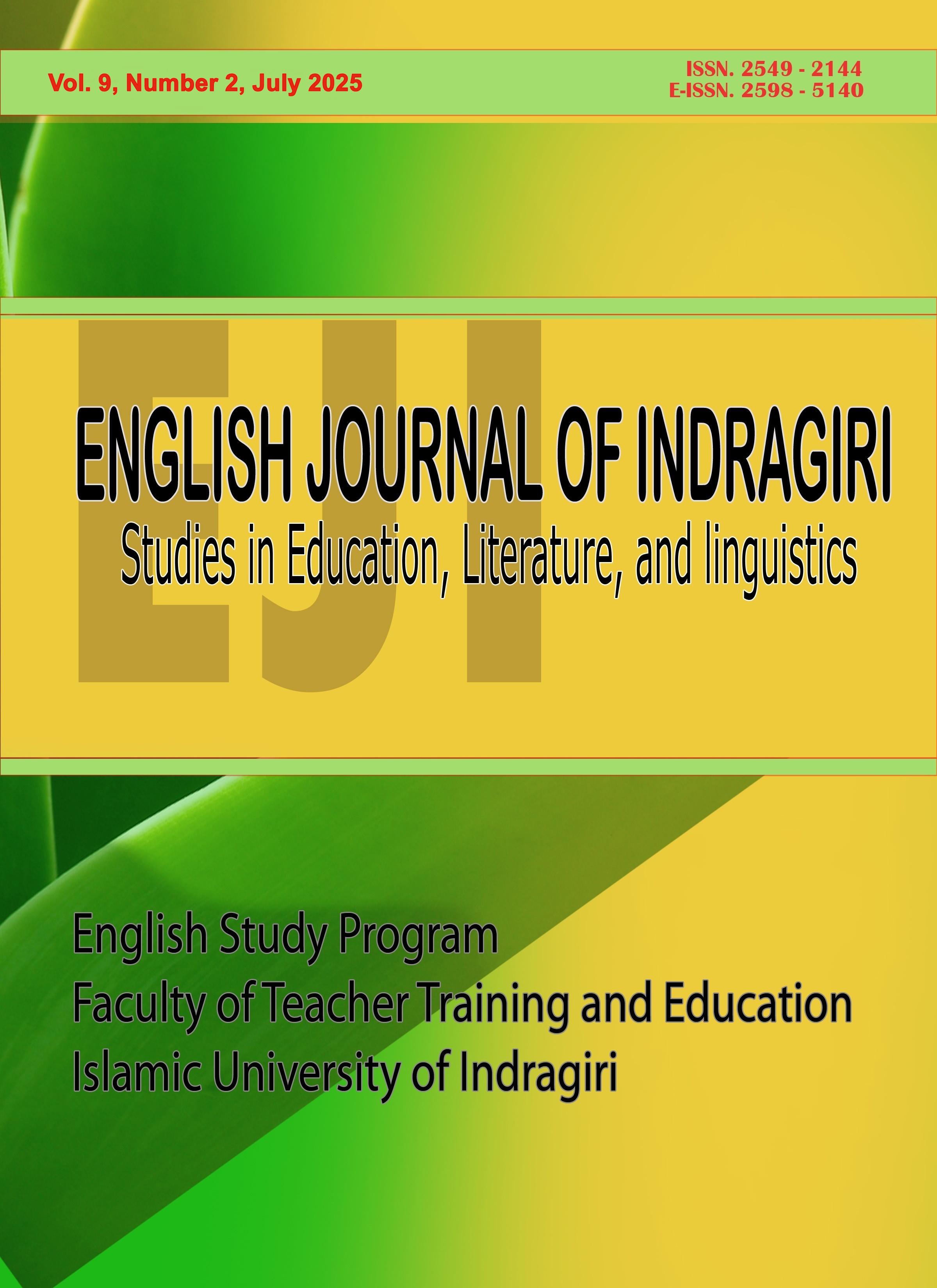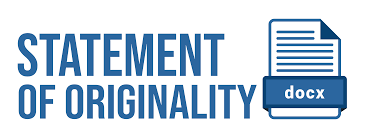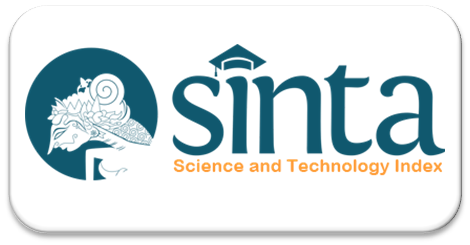EFL Learners’ Perspectives in Implementing Digital Annotation to Foster Critical Reading Skills
DOI:
https://doi.org/10.61672/eji.v9i2.2972Keywords:
Critical Reading, Digital Annotation, Reading SkillsAbstract
Critical reading requires advanced cognitive skills to evaluate, interpret, and analyse texts effectively. However, mastering critical reading can be challenging, especially for learners, due to factors such as vocabulary gaps, cultural differences, and diverse educational backgrounds. This study aimed to explore learners' perspectives on the implementation of digital annotation in enhancing their critical reading skills. This was descriptive qualitative research. Total sampling technique was applied in choosing the sample which involving sixteen eleventh-grade students from a private Islamic senior high school. The data were collected by using a questionnaire developed through Google Forms and it were analysed by reducing, displaying, and drawing conclusion which adopted from a three-step qualitative data analysis.The findings revealed that the use of digital annotation tools was perceived positively by students, as it facilitated better comprehension of reading materials, eased the acquisition of new vocabulary, encouraged critical thinking, and supported the generation of new ideas. Nevertheless, several challenges were identified, such as difficulty in articulating critical thoughts in writing, challenges in interpreting feedback notes, unstable internet connectivity, limited digital skills and supporting resources, digital distractions, and confusion caused by excessive annotations from multiple perspectives. In conclusion, learners had a generally positive attitude toward digital annotation despite facing implementation barriers. Therefore, educators are encouraged to integrate digital annotation thoughtfully, considering students’ digital literacy, technological access, and regional educational contexts to ensure effective and inclusive learning.
References
Abdel Halim, S. M. (2022). Critical reading challenges among EFL undergraduate students: A case from the United Arab Emirates. Reading & Writing Quarterly, 38(1), 67–82.
Abuseileek, A. F. (2012). The effect of computer-assisted cooperative learning methods and group size on EFL learners’ achievement in communication skills. Computers & Education, 58(231–239).
Chen, M., & Hwang, G. (2023). Effects of a mobile-supported critical reading approach on EFL students’ critical thinking and reading comprehension. Effects of a Mobile-Supported Critical Reading Approach on EFL Students’ Critical Thinking and Reading Comprehension, 36(5), 646–669.
Choi, J., & Yi, Y. (2019). Teachers’ integration of multimodality into classroom practices for English language learners. TESOL Journal, 10(1).
Chun, D. M., & Payne, J. S. (2004). What makes students click: Working memory and lookup behavior.No Title. System, 32(4), 481–503.
Cresswell, J. W. (2012). Educational Research: Planning, Conducting, and Evaluating Quantitative and Qualitative Research (K. Mason (ed.); Fouth Edit). Pearson Education, Inc.
Duan, Y., & Yu, S. (2023). Secondary school EFL students’ perspectives on using digital annotation tools for critical reading development. Interactive Learning Environments, 31(3), 1145–1158.
Etikan, I., Musa, S. A., & Alkassim, R. S. (2016). Comparison of convenience sampling and purposive sampling. American Journal of Theoretical and Applied Statistics, 5(1), 1–4.
Furqan, F. A., & Rosa, R. N. (2023). The Analysis of Students’ Digital Literacy Skills Level in Instructional Practice in English Department at Universitas Negeri Padang. Journal of English Language Teaching, 12(2).
Hamarash, K. K., & Hassan, B. A. (2022). Assessment practices for critical reading skills in Kurdish EFL classrooms: Teachers’ awareness and students’ achievement. Teaching English with Technology, 22(3), 65-82.
Huang, J. (2020). Critical Reading Challenges for EFL Learners. Asian EFL Journal, 27(3), Critical Reading Challenges for EFL Learners.
Huh, S., & Ha, H. S. (2022). Developing EFL learners’ critical reading skills through multimodal literacy practices. TESOL Quarterly, 56(4), 1184–1210.
Johnson, T. E., Archibald, T. N., & Tenenbaum, G. (2010). Individual and team annotation effects on students’ reading comprehension, critical thinking, and meta-cognitiveskills. Computers in Human Behavior, 26(6), 1496–1507.
Khonamri, F., & Karimabadi, M. (2023). Critical reading in the EFL classroom: Student perceptions and their relation to reading achievement. Journal of Language and Education, 9(1), 122–135.
Kim, J., & Brown, I. (2022). Critical reading for transcultural awareness: Korean EFL university students’ engagement with diverse perspectives. Language Culture and Curriculum, 35(4), 377–394.
Liu, G., & Zhang, X. (2022). Examining critical reading instruction in Chinese EFL classrooms: Teachers’ beliefs and practices. RELC Journal, 53(1), 111–126.
Liu, P. L., & Chen, C. J. (2021). Digital tools and reading comprehension: A meta-analysis. Reading Research Quarterly, 56(2), 245–267.
Marshall, C. C. (1997). Annotation: From paper books to the digital library. Proceedings of the 2nd ACM International Conference on Digital Libraries. ACM.
Maspufah and Zuriati, D. (2022). Implementing Speech-Texter Application to Improve EFL Learners ’ Fricative Pronunciation. 9(2), 1–12.
Miles, Matthew B and Huberman, A, M. (1994). Quality Data Analysis. In Sage Publication (Second). Sage Publication.
Mohammad, N., & Al-Awidi, H. (2022). Saudi EFL students’ perceptions of digital annotation tools for critical reading development. Interactive Learning Environments, 30(5), 857–871.
Noori, A. (2025). Enhancing EFL Reading Instruction with Digital Tools: Effects on Comprehension, Vocabulary, and Engagement. Journal of Social Sciences-Kabul University, 7(4), 289–313.
Novita, D., & Putri, A. R. (2022). Digital literacy practices and critical reading skills in Indonesian EFL contexts: A systematic review. Indonesian Journal of Applied Linguistics, 11(3), 580–593.
Silva, C., & Pereira, P. (2021). Brazilian EFL students’ perceptions of technology-enhanced reading assignments: Benefits and challenges. System, 97(2).
Tseng, S.-S., Yeh, H.-C., & Yang, S. -h. (2015). Promoting different reading comprehension levels through online annotations. Computer Assisted Language Learning, 28(1), 41–57.
Wallace, C. (2003). Critical Reading in Language Education. Palgrave Macmillan.
Wang, Y., & Chen, N. S. (2022). Chinese EFL students’ perceptions of collaborative online annotation for critical reading development. Language Learning & Technology, 26(1), 1–24.
Wang, Y., & Huang, Y. (2021). The influence of teacher annotations on student learning engagement and video watching behaviors. International Journal of Educational Technology in Higher Education, 18(1), 1–17.
Zhang, L., & Wang, J. (2021). Rote Learning vs. Critical Thinking: A Study in Chinese EFL Classrooms. TESOL Quarterly, 55(2), 389–412.
Downloads
Published
Issue
Section
License
Copyright (c) 2025 Yeni Afriyeni, Maspufah; Diana Zuriati; Rosmala

This work is licensed under a Creative Commons Attribution 4.0 International License.




















